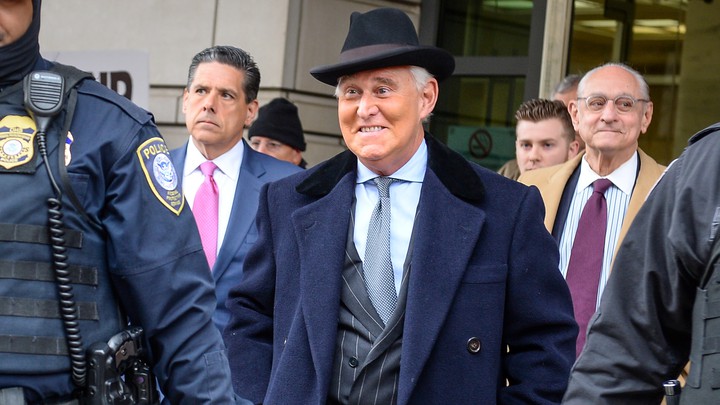
I confess to being a bit bewildered by the outrage building around Trump’s recent pardon of his business partner Roger Stone. Not because this is not outrageous–read Robert Mueller’s op-ed about Stone’s direct involvement in the misdeeds that led to Trump’s impeachment–but because Stone is only the last in a long list of people pardoned by Trump. The never-ending parade of horrors may have numbed some of us, but you might still remember the pardon of Joe Arpaio (the “penal cartoon” who ran Arizona jails as spectacles of dehumanization and humiliation).
Trump is not the only president to have used his commutation powers in controversial ways. As this excellent NPR piece explains, both Bushes and Clinton were criticized for misuse of their powers, as was Obama for the sheer number of commutations. What is unique about Trump’s pardons and commutations is that, with a handful of exceptions, they were given to people in furtherance of his own personal interests or to people prominently featured on Fox News. Moreover, Trump has virtually ignored the Department of Justice’s Office of the Pardon Attorney, whose function is to parse out the thousands of pardon requests it receives every year and make recommendations to the President. Usually, the President follows the Office’s recommendations, but not in this case, and as Mitch Jeserich and I discussed this morning on KPFA’s Letters and Politics, this means not only that Trump’s business partners and go-betweens are rewarded for their crimes, but also that ordinary people’s petitions are ignored and recommendations about them go unheeded. Trump’s adulation and courtship of celebrities is one contribution to his assault on the rule of law (with the notable exception of Kim Kardashian’s influence on the First Step Act). Combine all of this with Bill Barr’s jockeying of Manhattan federal prosecutors and you’ll find a continuation of the same trends.
One issue that Mitch and I discussed today was the public discourse around Roger Stone’s age and (he’s 67), and the argument that, with the pandemic ravaging prisons, he would be “put at serious medical risk in prison“. Of course age and health condition are valid considerations, but let’s keep things in context. Here’s a breakdown of the federal prison population by age. Close to 20% of them are aged 51 and older. Throw in people aged 46 and above, and you’re at almost a third of the prison population. That’s tens of thousands of people. One person, albeit famous/infamous, is a drop in the bucket, so forgive me if I’m not persuaded by the argument that this reflects sensitivity to public health.

Worried about older people catching COVID-19 in federal prisons? Let them go–not only the ones that are doing time for being presidential go-betweens, but those who are doing time on a Frankenstein-like construction of enhancements and multiplications on nonviolent drug offenses (this is not as much of a thing in state prisons, but it is a huge factor in federal ones).
Speaking of state prisons, the situation at San Quentin continues to be dire. Over the weekend, they’ve seen 204 new cases. Notably, those are 204 positives out of a total of 259 tests, so things are going horribly wrong there. There are also 167 new cases at CCC (reflecting a major testing push), 15 new cases at CCI (hundreds of new tests there, as well as in DVI), 8 new cases at CRC, 5 new cases at WSP, 1 new case at SOL, 1 new case at CAL, and 2 new cases at CHCF (this is particularly worrisome because this Stockton prison houses a medically vulnerable population.)
In short, gentle readers, things are not going well. Stay tuned for updates.




No comment yet, add your voice below!